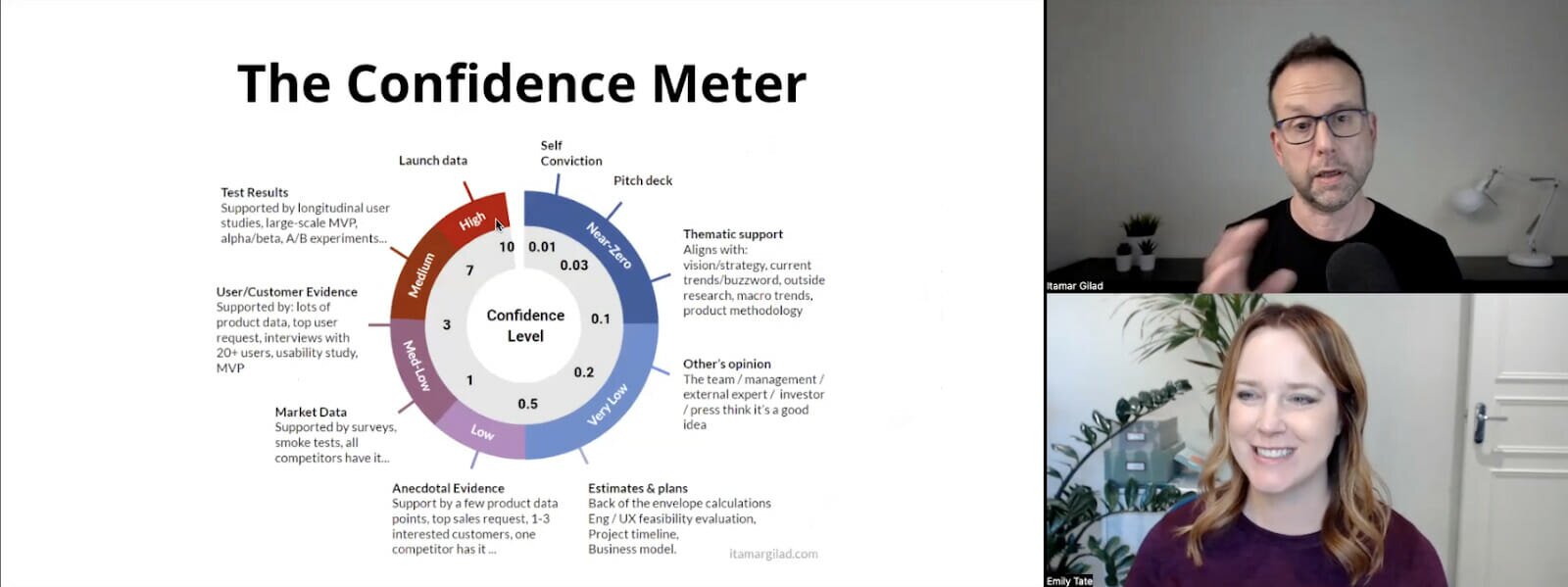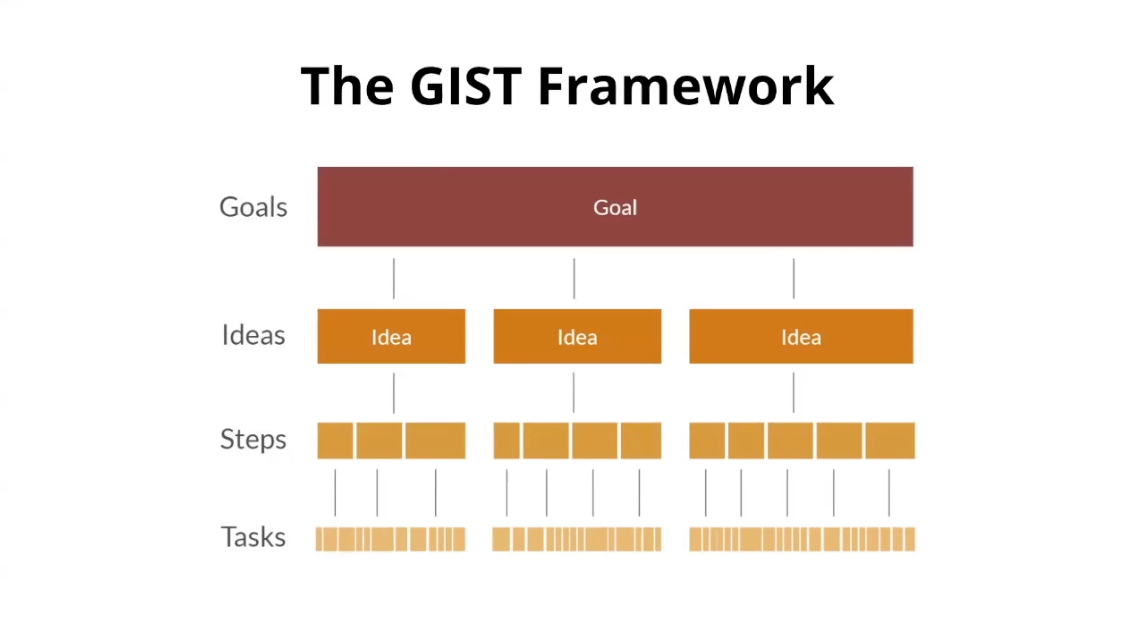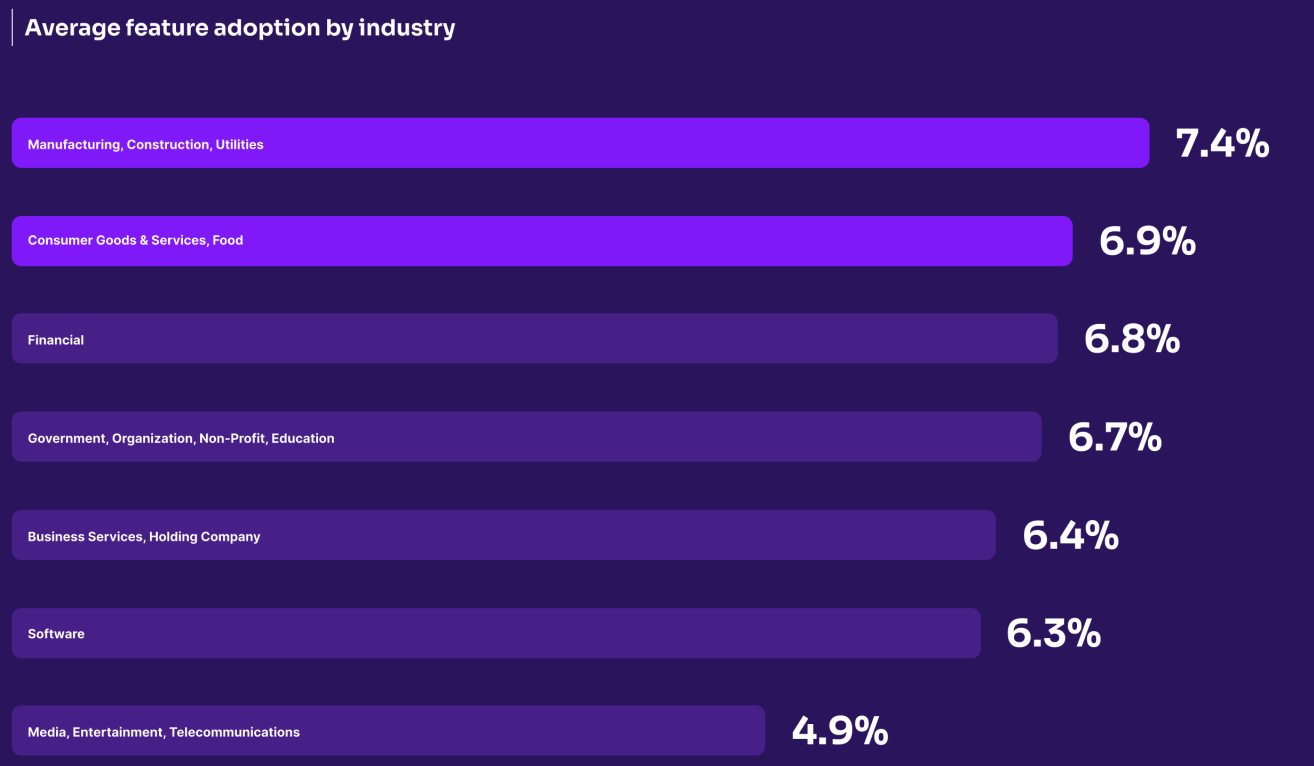In this Ask me Anything (AMA) for Prioritised members, Emily Tate joined Product Coach, Itamar Gilad, to shed some light on how data-driven product management really works in practice.
Watch the video in full or read on for the summary.
Why using data is key
In product management, the primary tool for making decisions is our judgement. We often have too many conflicts to make the best decisions. Modern product management can help us by using data to avoid bad judgement.
Itamar says that being data-driven is key to inform your subconscious about key decisions, as well as form the wider product strategy with the right form of data. It’s important to harness qualitative and quantitative data to reap the full benefits of data in product management. Finally, data can provide the necessary information that is required from your stakeholders.
“For example, I wouldn’t invest in web3 because a number of product managers have recommended this, I would use a mix of both quantitative and qualitative data to make a decision on whether to use it,” Itamar says. However, if you have an initial product idea, and the data that you discover goes against your initial judgement, you need to then make a decision on whether that data is pivotal to your next decision. If you trust the data and it doesn’t materialise into a useful insight, then it’s okay to make a decision against it, Itamar says. However you must not just find data that only supports your opinion.
Quantitative vs qualitative data
Quantitative data tells you what your users are doing but qualitative data tells you why, Itamar explains. It is therefore important to use both when making product decisions. To get the best of both, you need to do deep research into your customers to ask the right questions and get the most out of their answers, he says. Find the full story.
Determining success metrics early on
When testing data, product managers sometimes have an idea but they have nothing to compare it against when starting out. Once you get the results first time, you can then have a realistic example regardless of whether it meets your expectation or not.
To build an evidence-driven culture, you can use the confidence meter as a guide to get started. It provides an objective way to judge ideas backed up against data.
“Every time you launch a new experiment Itama says to do a risk and review assessment. Ask yourself what you learned and what was most impacted,” he says.
Acting on your data
If you use data right, you may end up discarding 6-7 business ideas that teams and stakeholders may not agree with. Asked how to go about having these difficult conversations, it’s important to start with your goals.
The GIST Framework will help teams to best understand when it is appropriate to progress with ideas and discard others. Never stray away from your yearly goal, explains Itamar. What are the goals, and what are the outcomes? If all teams align on this throughout the quarter then the whole business will know what success looks like.








